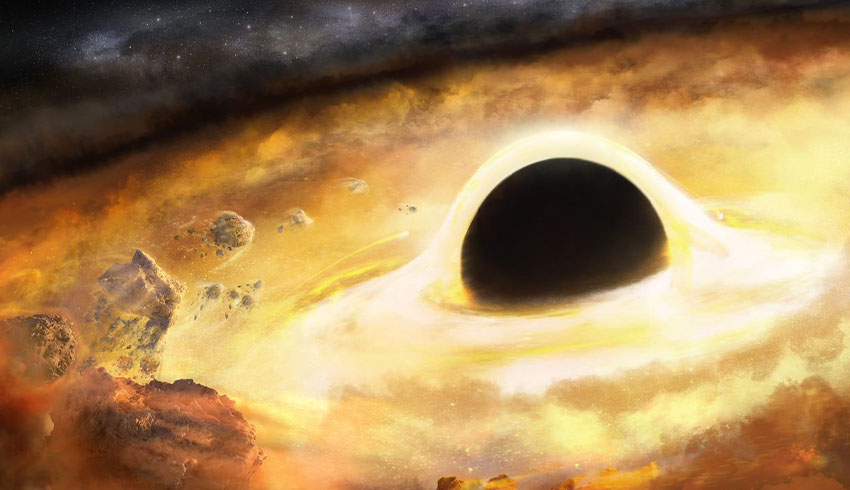Astronomers regularly observe gravitational waves (GW) – ripples in space and time – that are caused by pairs of black holes merging into one.
Einstein’s theory of gravity predicts that GW, which squeeze and stretch space as they pass, will permanently distort space, leaving a ‘memory’ of the wave behind.
However, this memory effect has not yet been detected as it is extremely small, leaving the faintest traces.
Led by OzGrav PhD student Moritz Huebner, the recently published paper explains the tricky conquest of searching for memory by analysing data from numerous different observations.
Huebner will present these results at the Australian National Institute for Theoretical Astrophysics (ANITA) in Canberra on Thursday, 6 February 2020.
The scientific models expect memory to leave an extremely faint trace on the detectors that is far smaller than the waves from the black hole collision itself. Therefore, data needs to be combined from many different gravitational wave events.
To do this, the team used some of the most precise GW and memory models developed from the study of black hole mergers.
Huebner explained, "Our algorithms carefully comb through the data and measure the exact evidence for the existence of GW memory."
For each individual observation, this painstaking method can take hundreds of hours on a normal computer chip to explore all the possibilities of how a GW signal came about – this prompted the researchers to focus on fine-tuning the setting to reduce the amount of computing hours without compromising the search.
So far, the results of the search applied to the first 10 black hole collisions – detected by LIGO and Virgo between 2015 and 2017 – have proven inconclusive. LIGO and Virgo are not yet sensitive enough to make any statements about GW memory.
"Thankfully, we can now use data from the first 10 black hole collisions and have a decent idea of how many observable GW events there will be in the future. We can also calculate how much evidence of memory can be detected in each event," said Huebner.
Throughout the study, the researchers also discovered that their new search method must take data from approximately 2,000 black hole mergers to detect memory. While this might sound implausible, the team expects to hit this number by the mid-2020s.
Plus, LIGO and Virgo are continuously being upgraded and have seen more than 40 mergers since April 2019, when the third observation run started. With further technological advances and the Japanese KAGRA observatory soon coming online, the team is confident that they’ll detect multiple binaries every day, which will finally lead to revealing GW memory.
OzGrav is funded by the Australian government through the Australian Research Council Centres of Excellence funding scheme. OzGrav is a partnership between Swinburne University of Technology (host of OzGrav headquarters), the Australian National University, Monash University, University of Adelaide, University of Melbourne, and University of Western Australia, along with other collaborating organisations in Australia and overseas.

